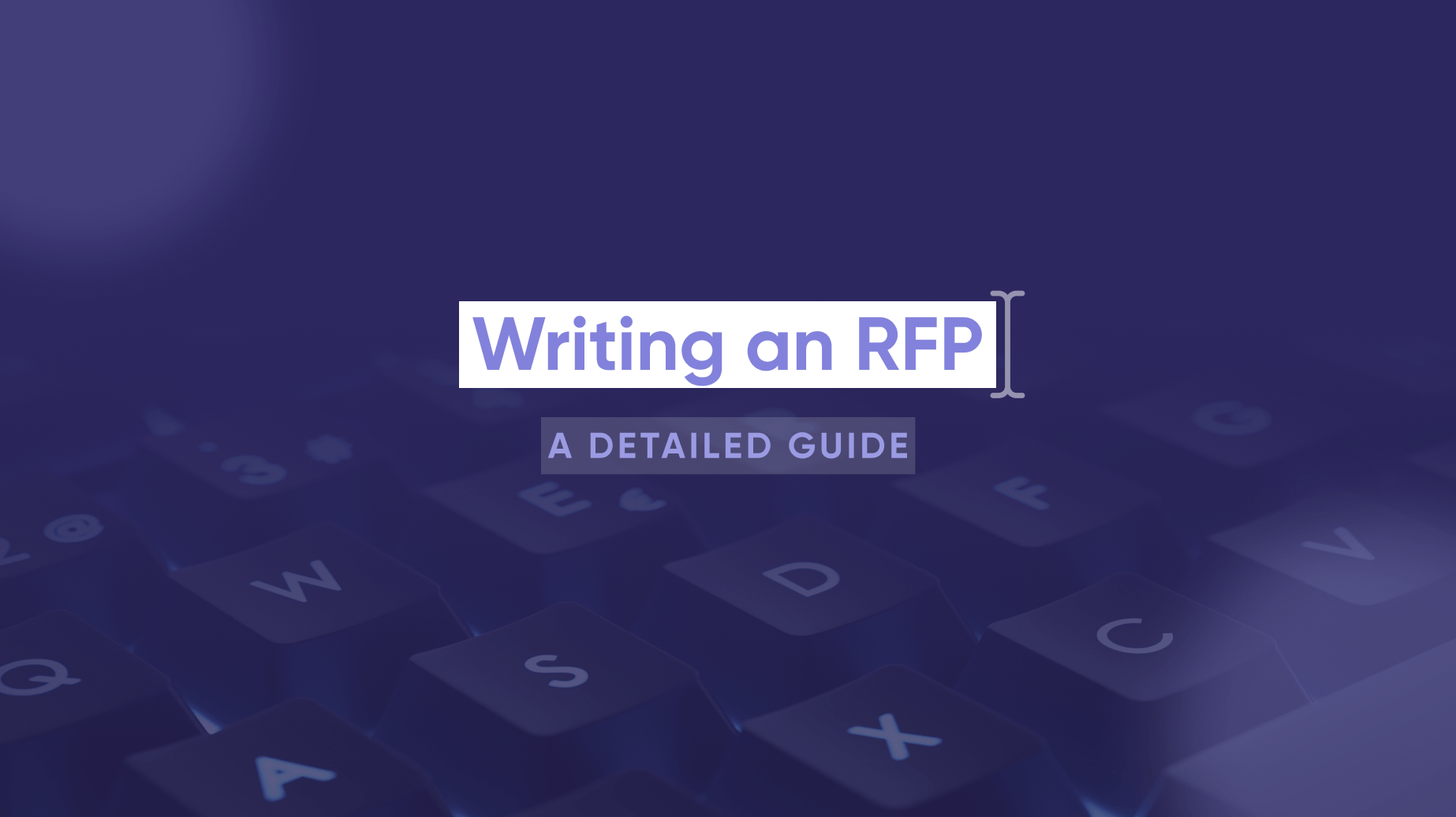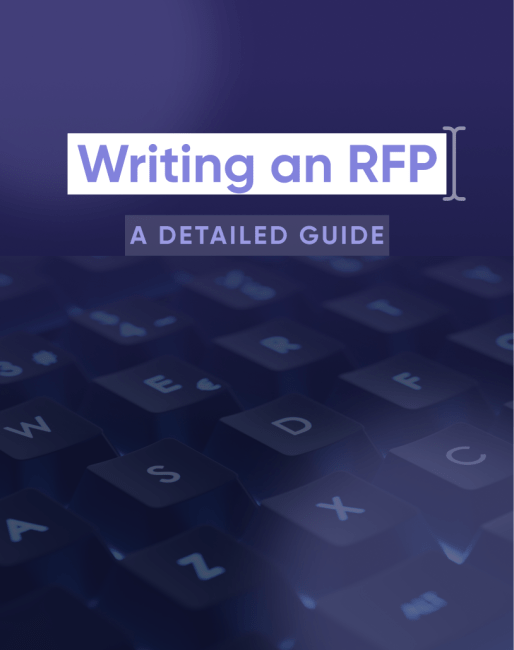Selecting the right expense management solution provider is crucial for organisations seeking to optimise costs, transparency, and management insights. Yet, the process can present challenges, leaving organisations puzzled by limited responses and prolonging the search for an ideal provider.
A request for proposal (RFP) is an essential part of the negotiation process, as it gives companies the means to provide a clear understanding of their needs to prospective providers. This allows them to offer tailored solutions without having to request for further details.
This guide will explore the essential aspects of writing an effective RFP. Ensuring your RFP is thorough and well-structured will enhance the chances of finding a solution provider perfectly suited to your company’s requirements.
Writing an RFP involves standard elements complemented by sections customised to your organisation’s specific demands. Collaborating with internal stakeholders, such as finance or administration leaders, ensures comprehensive coverage of your expense management needs.
A well-structured RFP typically includes:
-
Project Overview and Timeline
- Background information about the project and organisation introduction;
- Proposed timeline outline for the RFP process.
-
Detailed Questions
- Clear and concise questions regarding offered services, pricing structures, and platform capabilities;
- Specify expectations from prospective solution providers.
-
Business Challenges and Concerns
- Highlights existing issues or concerns in the current expense management process;
- Illustrate challenges through examples of customer cases or problem tickets.
The RFP must provide a clear understanding of the company’s needs. Before issuing the RFP, conducting thorough research on potential providers is essential to provide inquiries and assess compatibility.
Requesting references and information about past experiences can offer valuable insights into a provider’s capabilities and reliability.
General instructions
Buyer Information
Provide detailed information about the organisation, including size, industry, current expense management processes, and any specific challenges or requirements that need to be addressed.
Project goal
Clearly define the objectives and expected outcomes of implementing an expense management solution. The goals should be clearly articulated, whether it’s reducing processing time, improving compliance, or enhancing visibility into expenses.
Key performance indicators
Identify measurable KPIs that will gauge the success of the project. These could include metrics such as time saved, error reduction, or increased policy compliance.
Project scope
Outline the project’s scope, including the number of users, geographical locations, and any specific functionalities or integrations required.
Timeline
Provide a timeline for the RFP process, including submission deadlines, vendor selection, and implementation. Ensure it aligns with the organisation’s resources.
General vendor information
Company description and information
Request details about the expense management solution provider, including footprint (global, regional), years in the market, customer references, retention figures, and satisfaction ratings.
Company values
Inquire about the company values of the expense management solution provider and how they align with your organisation’s principles and goals.
ESG practices
Request information on the provider’s ESG practices (Environmental, Social, and Governance), reflecting its commitment to sustainability and corporate responsibility.
Product information
Product description
Request a comprehensive description of the expense management solution, highlighting its core functionalities and benefits.
Latest developments
Inquire about recent updates or developments in the product.
Product features
Enquire about the solution’s specific features, such as integrated corporate cards, modules, etc.
Product ratings
Ask the provider to share independent ratings or reviews of the solution to assess its performance and reliability.
Product roadmap
Request information on the expense management solution’s future product roadmap to ensure it aligns with your organisation’s long-term needs and objectives.
Technical requirements
Integration requirements
Specify any integration needs with existing systems (ERP, HR, Travel tools, etc.) and inquire about the solution’s ability to accommodate them.
Bank feed
Ask if credit card reconciliation from your bank is available within the software.
Storage and archiving
Request information on data storage options, archiving practices, and data security measures for the solution.
Functional requirements
End user expense flow
Specify requirements for the end-to-end expense submission process, including OCR capabilities, VAT readout, average submission time, expense types supported, alerts, trip/project allocation, offline submission, and integration with corporate cards.
Approval expense flow
Define expectations for the approval workflow, including monitoring capabilities, auto-approval capabilities, duplicate checks, customisation of workflow policies, and flexibility in workflow configuration.
Control workflow
Outline requirements for spend analytics, reporting capabilities, policy configuration, custom exporting options, outsourcing of control tasks, and compliance advisory features.
Security requirements
Authentication
Request details on authentication methods to ensure secure access to the software.
User provisioning
Inquire about the process for provisioning and managing user access within the system.
Certifications
Ask for certifications or compliance standards (e.g., SOC 2, ISO 27001, GDPR) to which the expense management solution adheres.
Data security
Request details on data encryption, backup, and disaster recovery measures to safeguard sensitive information.
Crisis-response protocols (RPO/RTO)
Seek clarification on protocols for rapid response and recovery in the event of a crisis or data breach.
Pricing and service information
Pricing model
Request all the details on the pricing structure; whether it’s subscription-based, usage-based, or customised according to your organisation’s needs.
Initial investment
Ask for a clear statement on initial investments required for platform access, connectivity, and implementation services.
Implementation methodology and practices
Inquire about the expense management solution provider’s implementation process, methodologies, and best practices.
Experience in similar implementations
Request examples of successful implementations in similar organisations.
Support model
Ask about the support services offered, including customer support channels, response times, and service-level agreements.
Provider evaluation
Now that you know everything that needs to be featured in an RFP, it’s time to create your own. Use this checklist to see if you’ve included all the necessary information before sharing the request with the providers. Remember: these items are crucial to help vendors understand your team’s needs.
General vendor information
Company description
❑ Footprint, years in market, customer references, satisfaction ratings;
Company values
❑ Alignment with your organisation’s principles;
ESG practices
❑ Environmental, Social, and Governance practices.
Product information
Product description
❑ Core functionalities and benefits;
Product features
❑ Key features (e.g., integrated corporate cards);
Product ratings
❑ Independent ratings or reviews;
Latest developments
❑ Recent updates or developments;
Product roadmap:
❑ Future updates and features;
Technical requirements
Integration requirements
❑ Compatibility with existing systems (ERP, HR);
Bank feed
❑ Credit card reconciliation availability;
Storage and archiving
❑ Data storage, archiving, and security measures;
Security requirements
Authentication
❑ Secure access methods;
User provisioning
❑ User access management;
Certifications
❑ Compliance standards (e.g., SOC 2, ISO 27001);
Data security
❑ Encryption, backup, disaster recovery;
Crisis-response protocols
❑ Rapid response and recovery measures;
Pricing and service information
Pricing model
❑ Structure (subscription, usage-based);
Initial investment
❑ Initial costs for access and implementation;
Implementation methodology
❑ Process, methodologies, best practices;
Experience in similar implementations
❑ Examples of similar projects;
Support model
❑ Support channels, response times, SLAs. Company description.
Request a proposal
When looking for an expense management provider, presenting the company’s specific needs is essential for the team to create a tailored solution. It’s also a way to avoid setbacks, delays, and multiple back-and-forth requests for further details.
If you’re looking for an expense management solution tailored to your company, get in touch with our team and we’ll craft a proposal based on your specific needs.



